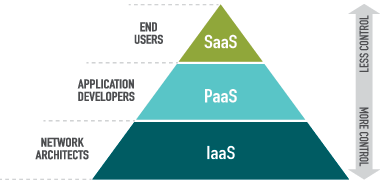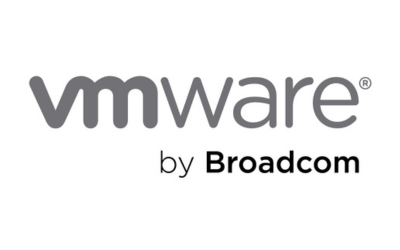Infrastructure as a Service (IaaS) is best visualised as sitting at the base of a three-tier Cloud computing pyramid that also comprises PaaS (Platform as a Service) in the middle and SaaS (Software as a Service), at the top. The amount of customer control over the virtualised IT resources increases as you descend the pyramid.
An easy way of thinking of IaaS is hardware-as-a-service: servers, storage, network infrastructure, data centre space owned and pooled by specialist third parties and offered as a fully outsourced, metered service on demand.
Customers are then free to manage the operating system, middleware and applications typically via self-service provisioning portals.
The Evolution of IAAS
Where once IaaS was bought as a straightforward outsourcing choice, today it is increasingly featuring in hybrid Cloud deployments, with organisations mixing on and off-premise infrastructure to create more tailored computing platforms as well as in SaaS models where software vendors want to offer their solutions as a cloud services without investing into infrastructure themselves. And as IaaS has matured so has organisations’ willingness to use it for more than low value development and storage requirements; business-critical systems are now an IaaS staple, with only highly intensive applications and those with extreme data sensitivities showing resistance to a move.
Why Should Organisations Consider Iaas?
With its ability to offer scalable, commoditised and virtualised operating environments of almost infinite capacity, and with its characteristic opex-based costs model, IaaS can:
- Allow new organisations to invest in hardware without upfront capital
- Underpin rapid organisational expansion through speed of on-demand provisioning
- Boost time to market through accelerated deployments
- Enable alignment of resources to business needs, especially where infrastructure demands may be volatile
- Take the pain out of substantial legacy refresh
- Create the foundations for business continuity
- Facilitate planning and budgeting through greater cost certainty
- Encourage a greater focus on adding value at the front end rather than on ‘keeping the lights on’ activity
- Drive down Total Cost of Ownership and carbon impact
The Benefits of IAAS
| Feature | Benefit |
|---|---|
| Replaces or supplements infrastructure | Time, cost and resource-effective means of keeping IT aligned with operational needs |
| No CAPEX required | Greater affordability removes barriers to provisioning and encourages more agile response |
| Control without constraint | Complete management of platform and total flexibility without the distraction of ‘keeping the lights on’ |
| Predictable OPEX | Cost certainty aids cashflow, budgeting and planning |
| Infinite elasticity | Resources can flex up and down to match needs precisely and eliminate waste |
| Rapid deployment | Improved time to market and sharper competitive edge |
| Built-in redundancy | Inherent strengthening of business continuity and disaster recovery capability |
| Optimised security | Safeguarding by specialists of business critical operating environment |




